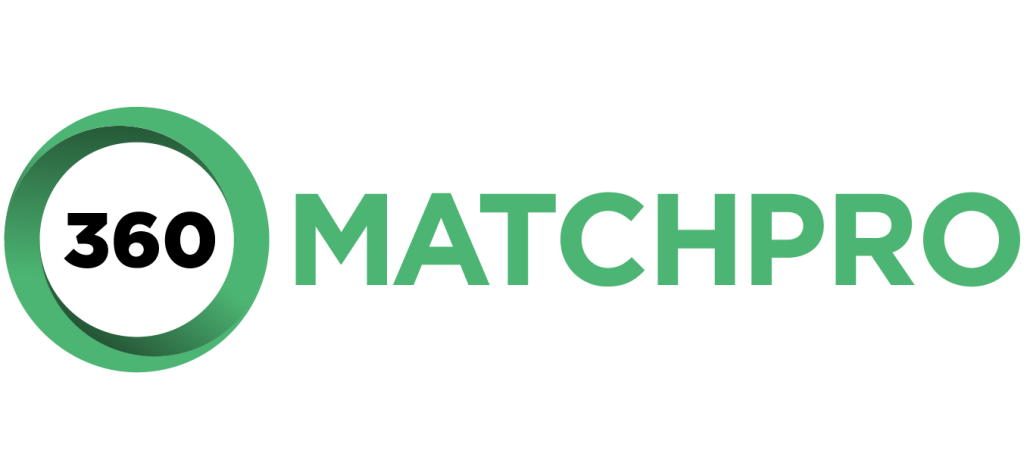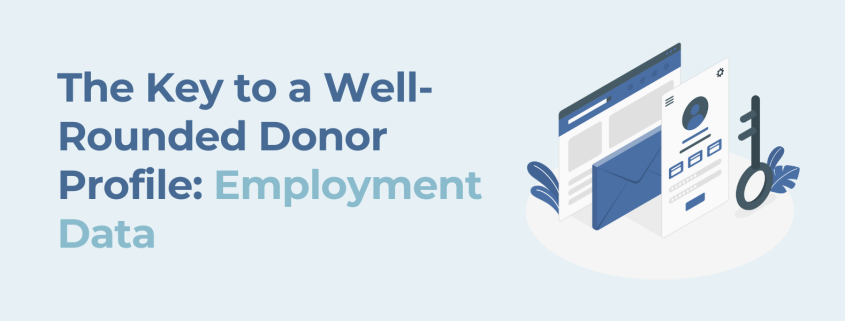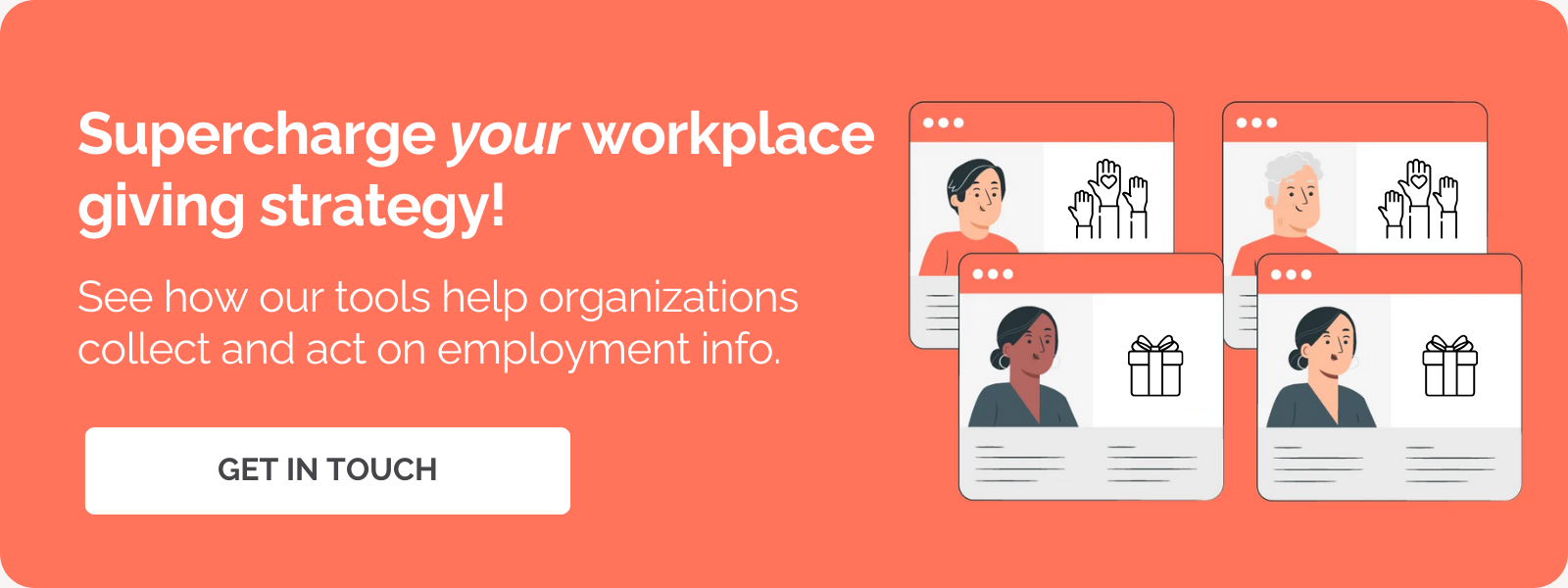The Key to a Well-Rounded Donor Profile: Employment Data
When it comes to building a comprehensive donor profile, employment data is often an overlooked but crucial piece of the puzzle. After all, understanding a donor’s professional background provides valuable insights into their giving capacity, philanthropic interests, and potential connections within their networks.
Whether you’re looking to enhance engagement strategies, tailor fundraising appeals, or identify workplace giving prospects, employment data serves as a powerful tool to inform and strengthen your efforts.
In this post, we’ll explore why employment data is key to a well-rounded donor profile—and how it can drive more effective fundraising strategies. Specifically, we’ll cover:
- Donor Profiles 101: The Basics
- How a Donor Profile Informs Nonprofit Fundraising
- The Value of Employment Data Within Donor Profiles
- Collecting Employment Information for Your Donor Profiles
Ready to dive into smart donor profile tips and strategies? Let’s get started with the essentials.
Donor Profiles 101: The Basics
Strong donor profiles are the foundation of effective fundraising. These records provide key insights into donors’ backgrounds, interests, and giving capacities, helping nonprofits tailor their engagement strategies accordingly.
But what exactly goes into a donor profile? Let’s break it down by the fundamentals.
What Is a Donor Profile?
A donor profile is a detailed record that compiles important information about an individual’s philanthropic behavior and personal background. It helps nonprofits understand their donors on a deeper level, allowing for more personalized and strategic outreach.
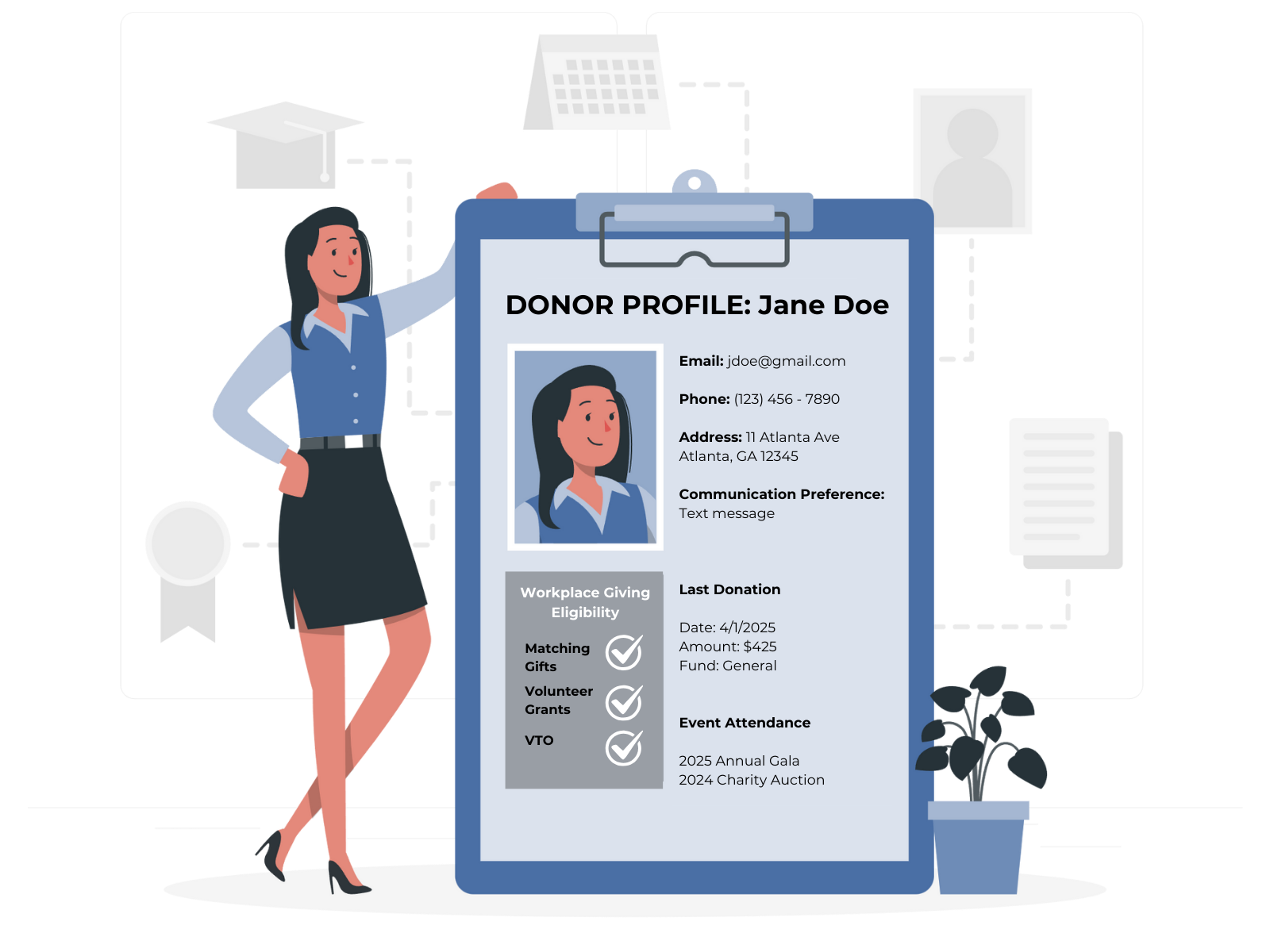
Key Components of a Donor Profile
A well-built donor profile contains a multitude of information about a supporter in your database. For the best results, this should include:
- Contact Information – Basic details such as name, address, phone number, and email ensure seamless communication.
- Giving History – Tracking past donations, including amounts, frequency, and designated funds, provides insight into giving patterns.
- Employment Data – Knowing where a donor works can unlock corporate philanthropy opportunities, such as matching gifts and broader workplace giving programs.
- Wealth Indicators – Net worth estimates, stock holdings, and real estate ownership can help identify major gift prospects.
- Engagement History – Notes on event attendance, volunteer work, and other interactions with your organization help track donor involvement.
- Interests & Philanthropic Priorities – Understanding what causes resonate most with a donor can shape how you approach future appeals.
- Communication Preferences – Knowing whether a donor prefers email, phone calls, or direct mail ensures you’re reaching them in the most effective way.
All in all, a well-rounded donor profile is more than just a record. It’s a strategic tool that drives smarter fundraising decisions and fosters long-term donor loyalty. By gathering and maintaining accurate donor data, nonprofits can create meaningful connections and maximize their fundraising impact.
How a Donor Profile Informs Nonprofit Fundraising
Equipped with the right data, your organization will be better prepared to bring its fundraising strategy to new heights. Here’s how a strong donor profile can inform nonprofit fundraising:
1. Personalizing Donor Outreach
Generic, one-size-fits-all fundraising appeals are far less effective than personalized, targeted communications. A detailed donor profile allows nonprofits to tailor their messaging based on donor interests, past giving behaviors, and preferred communication channels.
This leads to stronger engagement, higher response rates, and more meaningful donor relationships.
2. Identifying Major Gift Prospects
Wealth indicators, employment data, and past donation history within a donor profile help nonprofits identify potential major donors. By analyzing a donor’s giving capacity and philanthropic interests, fundraising teams can prioritize outreach to individuals who are more likely to contribute larger gifts.
3. Strengthening Donor Retention Strategies
Understanding a donor’s engagement history—such as event participation, volunteering, or other previous interactions—helps nonprofits build long-term relationships. Tracking this data allows organizations to send timely thank-you messages, anniversary acknowledgments, and impact updates, fostering donor loyalty and increasing retention rates.
4. Improving Campaign Effectiveness
By analyzing donor profiles, nonprofits can segment their donor base into meaningful groups—such as first-time contributors, recurring givers, and lapsed donors.
This segmentation allows for tailored fundraising campaigns that resonate with different supporter types, leading to improved conversion rates and higher fundraising success.
The Value of Employment Data Within Donor Profiles
When it comes to enhancing your donor profiles, employment data is a powerful yet often underutilized asset. Here’s how this information can enhance donor relations and fundraising success:
- Uncover workplace giving opportunities — Many companies offer corporate philanthropy programs, including matching gifts, volunteer grants, and paid volunteer time off. Knowing where a donor works allows organizations to tap into these opportunities and proactively inform donors about the programs, making it easier for them to maximize their impact. Plus, knowing where your donors work can even help unlock broader partnership opportunities!
- Tailor and personalize communications — Knowing where a donor works allows nonprofits to provide employer-specific giving instructions and more. By referencing a donor’s employer in communications, nonprofits can offer clear, step-by-step guidance on how to navigate these programs. For example, instead of a generic reminder, a nonprofit could send a donor-specific message like: “We noticed you work at XYZ Corporation, which offers a matching gift program! You can submit your match request through XYZ’s employee giving portal here: [link].”
- Estimate wealth and giving capacity — Employment data provides valuable clues about a donor’s financial standing. While salary information isn’t always available, knowing a donor’s job title, company, and industry can help estimate their giving capacity. For example, a C-suite executive at a Fortune 500 company likely has different philanthropic potential than a mid-level manager at a small business. Overall, these insights help fundraisers segment donors effectively and craft appropriate giving asks.
By leveraging employment data, nonprofits can uncover new fundraising avenues, build stronger relationships, and make informed solicitation strategies. Talk about a win-win!
Collecting Employment Information for Your Donor Profiles
Building a comprehensive donor profile requires the collection of accurate and up-to-date employment data. Check out these six effective methods for gathering employment information from supporters:
Within Donation Forms
One of the easiest ways to collect employment data is by incorporating a field for employer information within your online donation form. Since donors are already providing personal details, they may be more likely to share their workplace information at this stage.
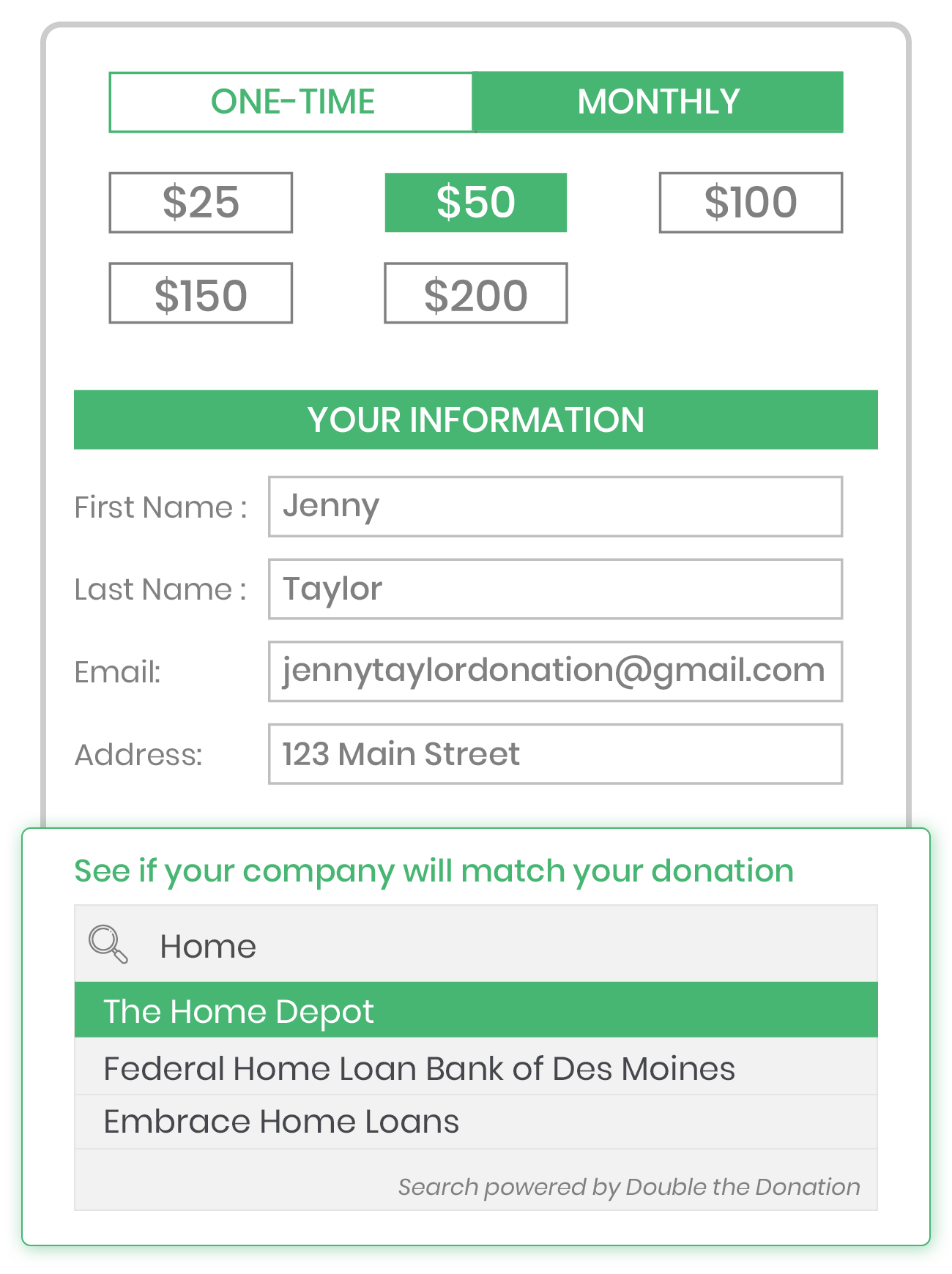
To encourage responses, nonprofits can frame the question around matching gifts, such as, “Does your employer offer a matching gift program?”
Within Volunteer Registrations
Volunteers are often some of the most engaged supporters, making volunteer registration forms another great opportunity to gather employment details.
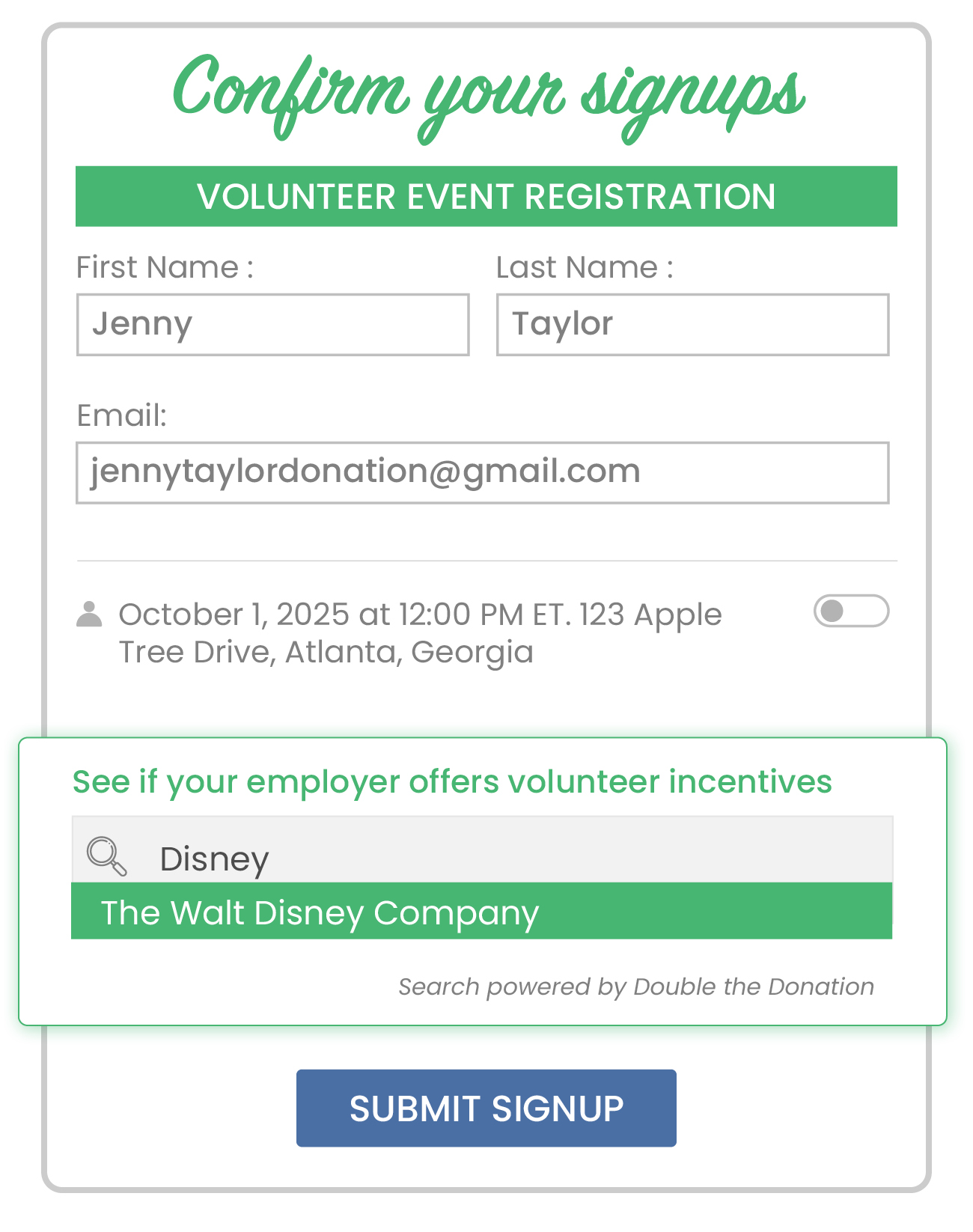
By asking for workplace information during sign-ups, organizations can identify corporate volunteer grant opportunities, encourage employer-sponsored donations, and deepen relationships with volunteers.
Using Email Domain Screening
An email address can provide clues about a donor’s employer, especially if they use a corporate email (e.g., jdoe@company.com). Automated tools can scan email domains to match them with known companies, helping nonprofits infer workplace details through email domain screening.
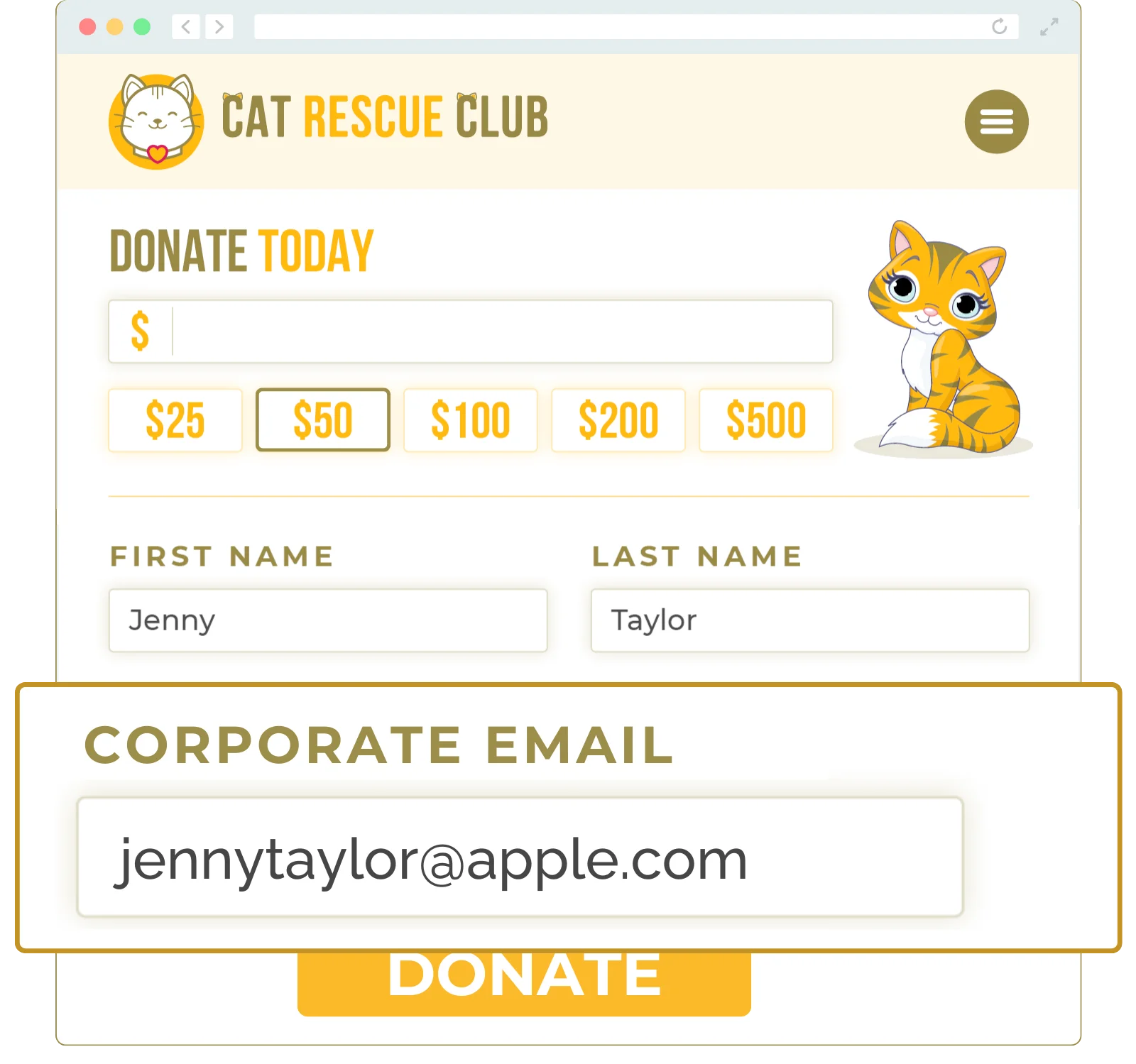
Via Email Follow-Ups
For donors who don’t provide employment details during their initial interaction, a well-crafted email follow-up can help fill in the gaps. A personalized message can ask supporters to update their donor profile, highlight potential matching gift opportunities, and explain how employer information enhances the organization’s impact.
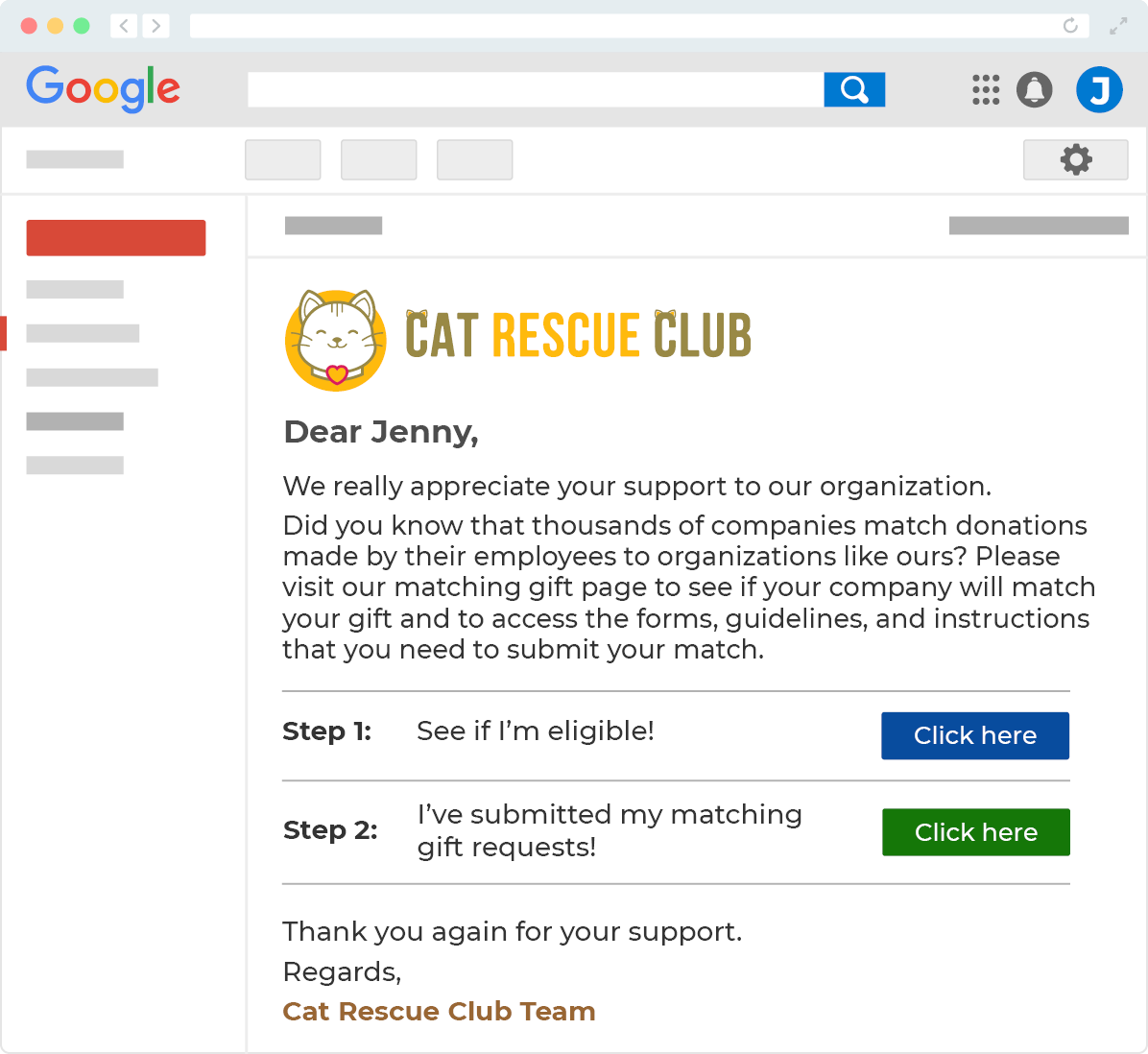
Conducting Manual Research
Sometimes, a bit of detective work is necessary. Searching LinkedIn, company websites, or professional directories can help nonprofits find employment details for high-potential donors.
While this method is a time-intensive one, it can be especially useful for major gift fundraising and other prospect research.
Using an Employer Appends Service
For a more automated approach, nonprofits can use an employer appends service—a tool that cross-references donor data with extensive employment databases. These services can provide employer names, job titles, and more, helping nonprofits quickly enrich their donor profiles by filling in existing gaps.
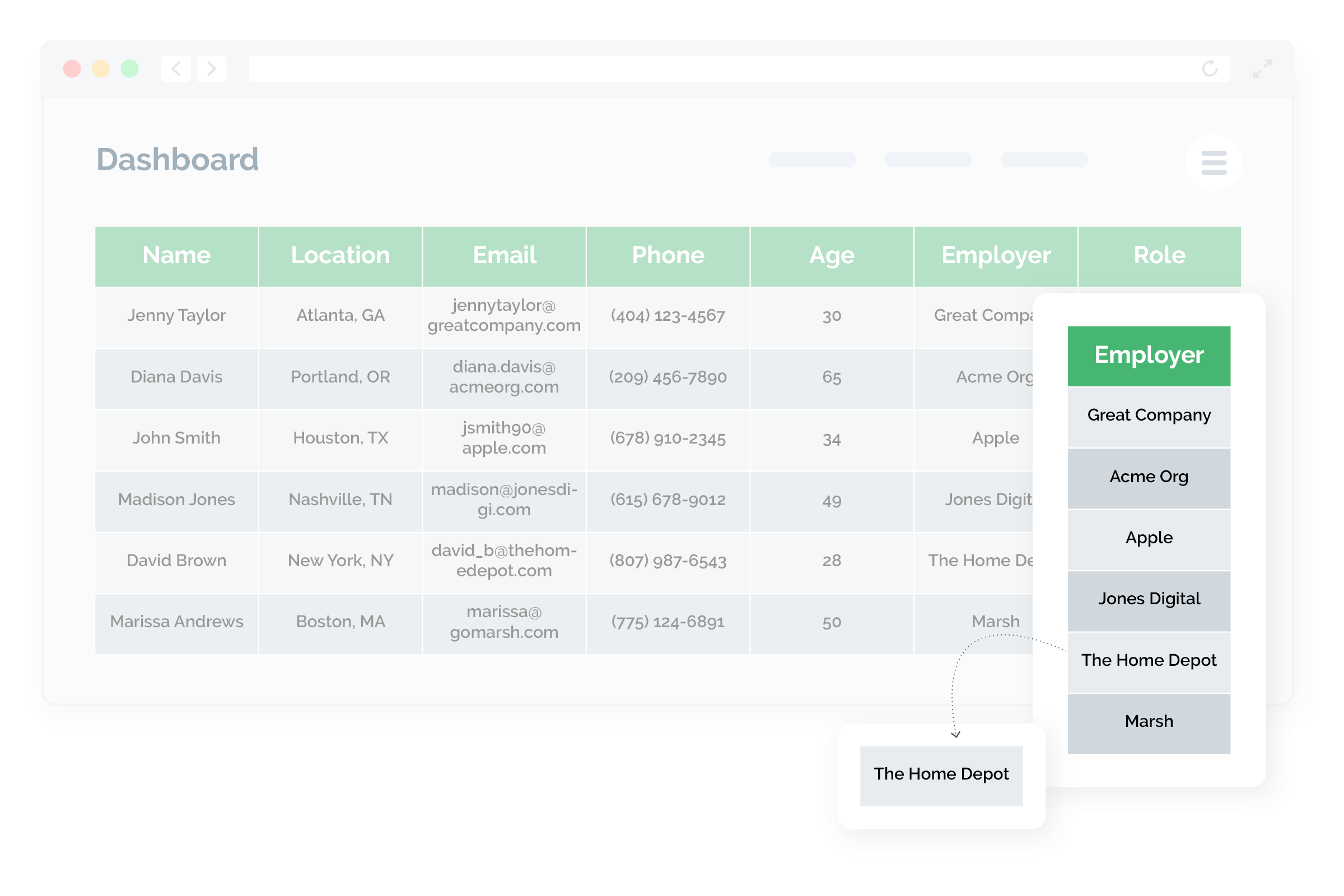
By leveraging a combination of these methods, nonprofits can systematically collect and update employment data, unlocking new fundraising opportunities and strengthening donor engagement strategies.
Final Thoughts & Additional Resources
Incorporating employment data into donor profiles is not just a nice-to-have. It provides a strategic advantage that helps nonprofits build stronger relationships and secure more impactful contributions.
By leveraging insights into a donor’s workplace, company affiliations, and industry influence, organizations can craft more personalized engagement strategies and uncover new opportunities for support. When used effectively, employment data can transform fundraising efforts, ensuring that outreach is both meaningful and mission-driven.
Ready to take your donor profiling to the next level? Start integrating employment data today!
Plus, check out these additional fundraising resources to learn more:
- How Donor Employer Information Boosts Fundraising + Workplace Giving. Discover how donor employment data can significantly enhance your fundraising efforts. Explore the impact of employer information on donor segmentation, corporate philanthropy, and workplace giving programs.
- Driving Value with Employer Data in the Supporter Lifecycle. Employer data isn’t just valuable at the point of donation—it plays a crucial role throughout the entire supporter lifecycle. Learn how to use employment insights to personalize outreach, strengthen engagement, and increase retention here.
- The Ultimate Guide to Employer Appends for Fundraisers. Select the right service provider, integrate employment data into your database, and use it to unlock giving opportunities. This resource walks you through the entire employer append process, ensuring you maximize your fundraising potential.
